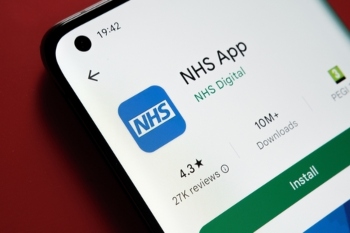
Justin Day, CEO and co-founder of Cloud Gateway, considers what local government devolution can learn from NHS digital transformation.
The government’s recent devolution white paper represents the most significant reform of local government since the 1970s. Its ambitious agenda aims to modernise governance, streamline decision-making, and unlock new efficiencies in public service delivery. But, as councils prepare to adapt to these changes, how can they ensure these reforms truly benefit their communities? The answer lies in technology.
The integration of NHS Digital and NHSX into NHS England demonstrated how centralising digital transformation can enhance service delivery and improve outcomes. Local councils have a unique opportunity to harness these insights as they navigate their own transformation journeys.
A unified digital strategy
The NHS's journey shows just how important a unified digital strategy can be. Bringing together scattered systems, simplifying operations, and combining digital efforts, the merger paves the way for smarter, joined-up decision-making. For local councils, a similar approach could unlock significant benefits. Centralising digital transformation across regions or even within individual councils, can help avoid duplication, reduce costs, and ensure consistency in service delivery.
Successful models already exist. Exemplar authorities such as the West of England Combined Authority and Greater Manchester Combined Authority that have embraced digital transformation. These councils have shown how innovations like automated processes and data-driven services can lead to better outcomes for both residents and staff.
As local authorities transition from two-tier councils to single unitary authorities, devolution presents an opportunity to reimagine service delivery. Working together, councils can share best practices, consolidate their technology estates, and adopt shared platforms that benefit multiple authorities. This starts with investing in the right network infrastructure, the foundation which helps organisations adapt and evolve.
Key steps for councils:
• Leveraging unified cloud strategies – by combining budgets, councils can adopt a unified cloud posture across a unitary authority, using one or multiple Cloud Service Providers (CSPs) to manage services. This reduces duplication and ensures resources are allocated more efficiently. For instance, councils can negotiate better licensing agreements for cloud-based software resulting in lower costs per user. A cohesive cloud strategy also enables councils to scale services dynamically, improving reliability, user experience and performance monitoring.
• Optimising Wide Area Networks (WANs) – merged councils can restructure their WANs to ensure more efficient connectivity between sites and faster access to shared resources. A unified WAN design allows for better bandwidth management, improved performance, and easier troubleshooting. Councils can also negotiate better pricing for larger-scale WANs, ensuring reliable connectivity at lower costs.
• Simplifying internet access – by centralising internet connections into a hub, councils can eliminate redundant connections at individual sites. This approach reduces costs and simplifies management while freeing up resources for high-capacity connections or next-generation technologies like high-speed fibre or 5G.
• Streamlining data infrastructure – councils can consolidate their infrastructure under one roof, instead of hosting services in separate locations. They can also integrate Health & Social Care Network (HSCN) and Public Services Network (PSN) connections so users can access national resources through a single, secure route.
• Consistent cyber security and remote access – unified councils can enforce consistent cybersecurity measures such as encryption, multi-factor authentication, and network segmentation, strengthening the protection of backup data. In the event of an attack, a unified system allows for quicker identification, containment, and response, reducing unnecessary delays.
• Standardising remote access solutions – a consistent approach to remote access solutions, such as VPNs or Zero Trust Network Access (ZTNA), becomes possible for unified councils. This not only simplifies remote work for hybrid workers but also enhances security and reliability, as users can be managed and controls adjusted from one place.
Smarter service delivery
The NHS’s success in digital transformation shows how technology can reshape public services, and councils now have a similar opportunity. By pooling their budgets, council technology teams can unlock greater purchasing power, making it easier to negotiate better deals with IT suppliers. This collective approach helps lower costs for essentials like software licensing, hardware, and managed services. Helping to use resources more efficiently, simplify maintenance, and share data more seamlessly.
These steps don’t just save money, they open doors for innovative public-facing services. Devolution isn’t just about power and policy, it’s a chance to reimagine how councils operate, using technology to deliver smarter, more efficient services that genuinely improve citizens’ lives. With the right strategies and investments, local governments can turn this period of change into an era of opportunity.













